I was discouraged about starting a new garden because the veggies I had seeded were failing to grow. When I learned about a local Permaculture consultant I ended up hiring her for a brief consultation. A relatively small investment went a long way in kicking off a new leg in my gardening education and journey.
I'd like to share some of the tips and advice I received so that you may benefit.
If you are just getting into #Gardening or #Permaculture it might be worth your while to consult with a local Permaculture designer to get some expert advice. Look for someone that has a good reputation / track record. If you happen to live in Southern California I highly recommend considering hiring Vegetariat for Permaculture/garden design or consultations.

Please keep in mind some of the plants and strategies that are mentioned are suitable for the Southern California climate which in many cases is hot and arid. You would want to research appropriate plants for your own climate.
More posts in this series:
Part 1: From Grass to a Vegetable Polyculture
Part 2: How I Used Pioneer Veggies to Build Healthy Soil
Part 3: A Permaculture Consultation for A New Garden
Part 4: Celebration of Abundance! Epic Garden Harvest
Light Colored Fences Reflect Light
The lighter colored fence reflects light and creates more heat that is shining on the young plants. In the hot & dry climate more heat during the summer was not something that I wanted. Consider growing vegetation along the fence to reduce the reflection of light and heat, such as passion fruit or vining roses.
Clay Soil is Thermal Mass
Our heavy clay soil was both holding heat from the sun and reflecting light which create a hotter environment for the young plants around it. Rocks, bricks and other mass-ey objects can hold heat also. While the plants are small and not able to cover the soil with their leaves the clay soil was trapping heat and also reflecting light back toward the young helpless plants. Use a dark mulch on top of the soil to help stop the reflection of light. Also a lightweight mulch/compost would not absorb and store as much solar heat as the clay soil.
However, if your climate is quite cold you may want to try to achieve the opposite effect by promoting heat retention with thermal mass!
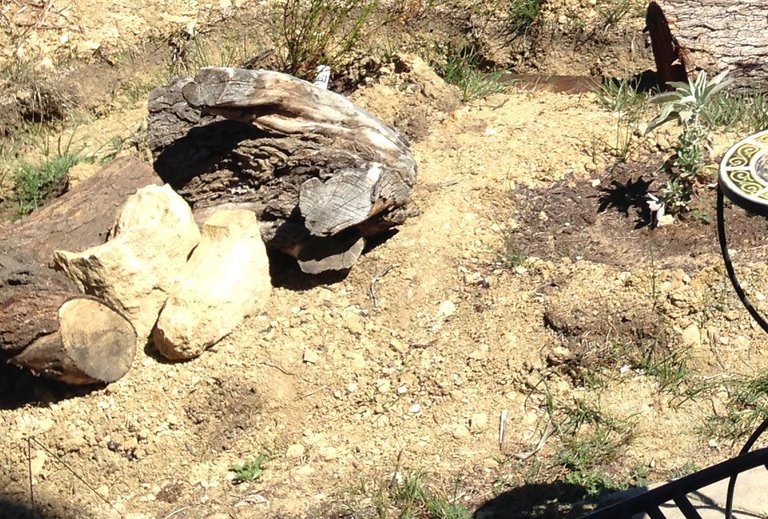
Quick Compost
Compost takes time to make and in a new garden this is a challenge because that's when compost is needed the most. While you are getting started you can quick compost right in the ground near the roots of your plants so that they can access nutrients as materials decompose. Bury clumps of food scraps, compost, paper, cardboard and worms (red wigglers). Mark where you last buried material so you know where it was, next to existing plants. On the next day put it in a new spot, down the line of your plants. This helped us reduce our waste into municipal trash and recycling streams.
You can also add "quick compost" inside holes that you dig to plant a new veggie start, plant or tree. Dig the hole a little deeper than you would, then toss your food scraps, paper, cotton cloth or other organic matter down at the bottom of the hole. Then put a little soil or compost on top of it so that your plant's roots aren't directly in contact with the rotting food. As the plants roots grow they will be able to access the decomposing matter as needed.
Put Leaves On Top of the Soil
Start mulching the soil right away to get water retention and food for the soil. Leaves are a free resource that can be found from neighbors and around the neighborhood in common areas. If there are trees in the neighborhood and unless everyone is saving those leaves for their own soil, there is likely literally way more leaves than you could use. You can also do this with lawn clippings (don't lay lawn clippings too thick though)!
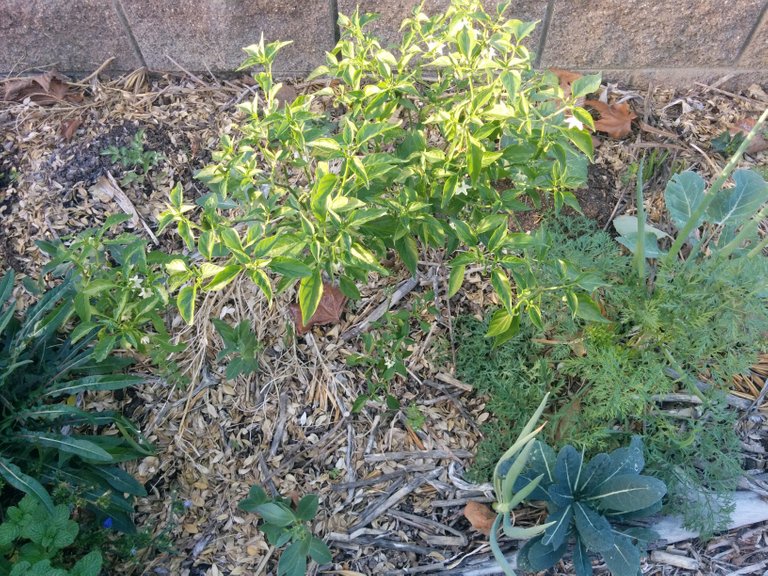
Lasagna Gardening Method of Sheet Mulching
Sheet mulching is a no till approach to converting a patch of weeds or lawn into a productive, fertile garden space. Here is a quick recipe for sheet mulching:
- Leave your grass as is. No need to dig it up or till it.
- Put down a layer of 1/2" - 1" of cardboard on top of the grass
- Add 4" compost, straw & leaves on top
- On top is the good compost (in our area it was free mushroom compost)
- Keep at least 4" away from the base of tree trunks
Toby Hemenway created instructions for a "Bomb Proof Sheetmulch" in his book Gaia's Garden and can also be found here.
You could also purchase or check out from your library Lasagna Gardening by Patricia Lanza for more ideas about lasagna gardening. The general idea is start with cardboard to block weeds and grass and layer organic materials on top in layers. With emphasis on diversity of materials and repeating your layers at least several times. Then once you establish that initial sheet mulching you can continue adding layers on top as compost and "mulch" layers that continue to add food to your garden.
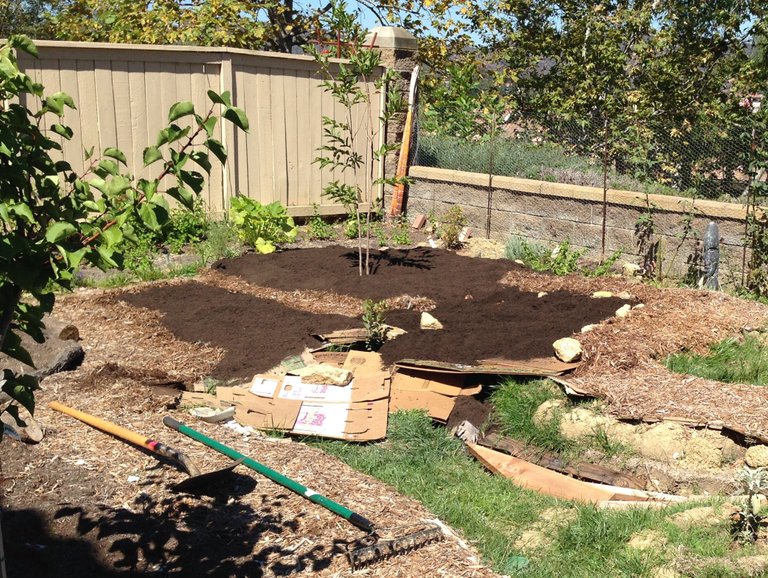
All of the layers of the sheet mulching, including the cardboard and the grass, will eventually start rotting and break down, creating food and habitat for worms, insects and microbes. Worms will eventually carry organic matter from the top layers down deeper into the soil and create channels for roots to grow. The more this happens, the deeper your top soil layer gets and the looser and more fertile your lower, original soil gets.
I found that it's better not to skimp on the cardboard during the sheet mulching process especially if you have pernicious grasses or weeds like bermuda grass. Large overlapping like 12" of overlapping between pieces of cardboard and multiple layers really helps block bermuda rhizomes from spreading. They are quite adept at traveling long distances before they find a small space between cardboards to come up and announce themselves!
It is also worth the pain of stripping as much tape & glossy stickers as possible off of the cardboard, so that you don't find bits and pieces of plastic in your soil years to come. Likewise refrain from using glossy cardboard.
Add Perennials
Initially adding in quick growing perennials and native perennials like sages that will grow large quickly and wide roots that will help start breaking up the tough clay soil. In general combining perennials with your annual veggies in the veggie garden helps support the veggie growth and creates a rich, more robust soil life and food web.
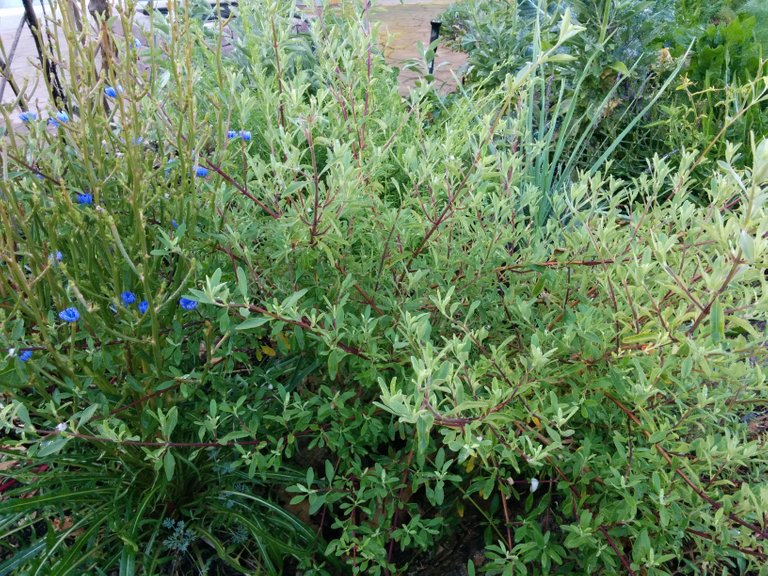
Native Landscaping
Native plants help create a sense of place, add habitat for wildlife, reduce the need for irrigation and help improve the soil. Consider going to the local native plants nursery and talking to the staff about native plants that might meet your garden design criteria and while providing a healthier, more beautiful and sustainable ecosystem in your backyard.
Pathways First
When creating the new garden design, plan pathways first (consider at least one main path that is 3-4 ft wide for easy wheelbarrow access), then create guilds/combinations of plants throughout the garden. Pathways give access to garden spaces and aesthetic viewpoints. In my case I already had trees in the ground so I designed my pathways around the trees for access. When designing pathways I was considering how far I could reach from the pathways. Once the pathways were designed and in place, it was easy to use the remaining space to create veggie and perennial plant beds.
You'll notice my pathways are quite close to the young trees. I knew that the trees would eventually grow over the pathways but I didn't want to make my pathways too far from the trees because I also wanted to maximize my veggie bed space. I figured that either I would do some creative pruning as the trees grow or the paths would move over time. I only mention that to remind you to consider the size of trees and shrubs when they are full grown, which is usually quite a bit larger than when it's first planted.
Actively aerated compost tea
Compost tea helped me get life back into my plants that had yellow leaves, were stunted and weren't growing. It took patience and consistently applying compost tea regularly, usually at least two times a week. Within about 1 month I saw a huge improvement.
- 5 gal bucket with rain water or dechlorinated city water (leave outside for 24 hours)
- Add 1 tbsp molasses
- Several scoops of compost (w/ microbes) into a fine net sack, stocking or paint strainer
- Fish tank aerator with stone at the bottom of the bucket
- Brew for 13 hours
- Brew for maximum 2 times
Pour/spray compost tea onto plants, seedlings & soil around them.
Full recipe and details found here.
Bury Wood Near Perennial Root Zones
Bury wood in the ground. Whether prunings from your trees and shrubs or logs of wood scavenged on craigslist or from your neighbors. Wood will decompose and give food and habitat for your tree and shrub roots. It will also absorb moisture and help hold water for your plants during dry times. Wood can be buried in the ground next to or under new tree plantings, or it can be buried next to the root zone of existing trees.
I buried a lot of logs and scrap wood around in the garden. Some of these stumps were too big to bury so I split some for firewood and set some around the garden as is for some interesting aesthetics and to create microclimates for plants and habitat under the wood for insects and worms as it rots.
Grow Squash Everywhere
Since sheet mulching an entire yard is a process that takes time. Meantime there is all this open grass area that is not producing food. It could be utilized to grow squash and let them sprawl all over! They would just need some good soil or compost where they are planted to get going, but they can spread from there.
Zoning for Water Requirements
Keeping different plants in different zones of the yard will help reduce over watering. Veggies need the most water so they could be in their own zones. Veggies bordered with Mediterranean shrubs which require less water. Then those shrubs could be bordered with native shrubs and plants which require even less water. This would be the smart approach rather than mixing plants with different water needs.

Don't Throw Away Dog Poop!
You don't want dog poop around your food because it could transmit disease if it's not fully broken down. But if you throw it under your ornamental (non edible) trees, it is free fertilizer and there is no risk of contamination. Don't throw away this valuable resource! Any form of manure (poop) has lots of nitrogen, minerals and trace minerals that can be easily accessed by plants once it is broken down by fungus and insects which deliver it to plant roots.
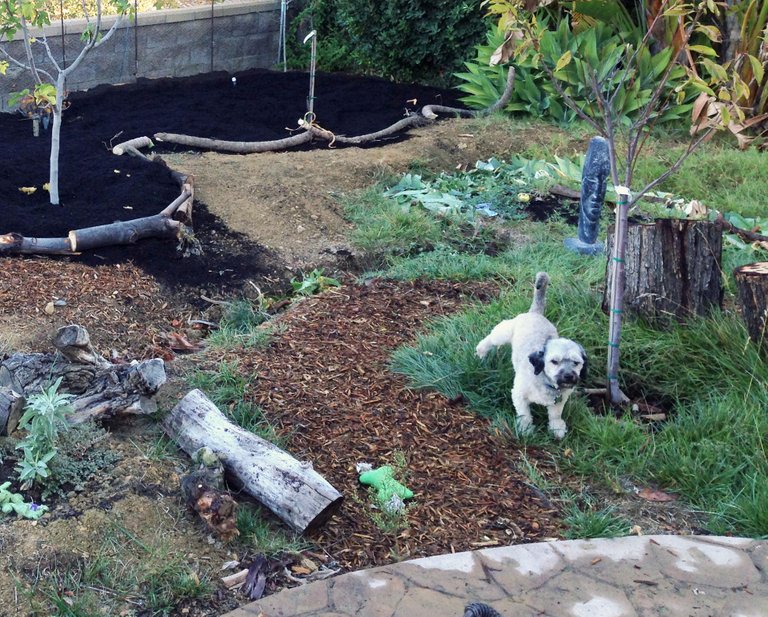
Use Shade to Your Advantage
On the shady side of the house, plant kiwi vine or passionfruit. Take advantage of this space for growing food. Don't disregard it as being unusable just because it is very shady.
Biodiversity is Wonderful
The more biodiversity the better. You can't really go wrong with adding many species of plants together. Don't overthink what plants can grow with what plants. While there are exceptions like with Walnut or other alleopathic plants, more often than not plants will be happier with more diversity. Biodiversity encourages more fungal communications in the soil which enhances health and fertility and creates a more healthy ecosystem. Different plant combinations throughout the garden helps avoid insect infestations. Insects get confused by diversity and have a harder time establishing themselves in numbers.
Mother Nature gives gardens extra points when they have more biodiversity ;)
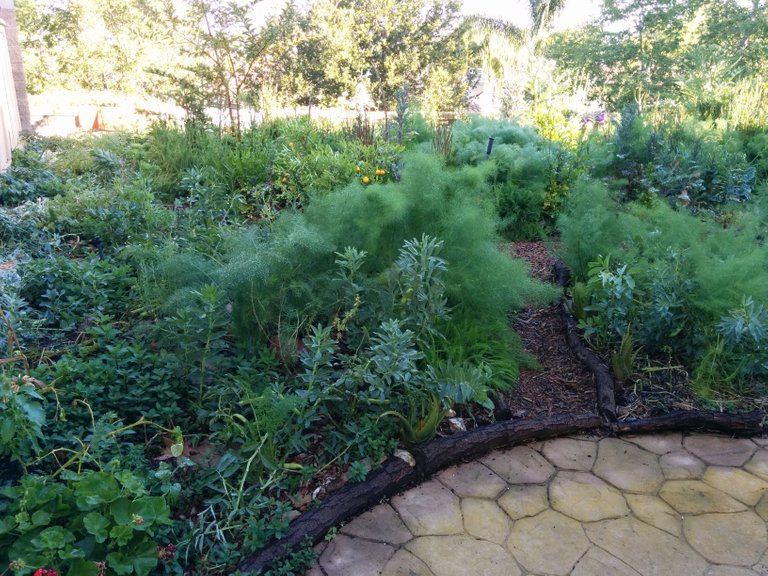
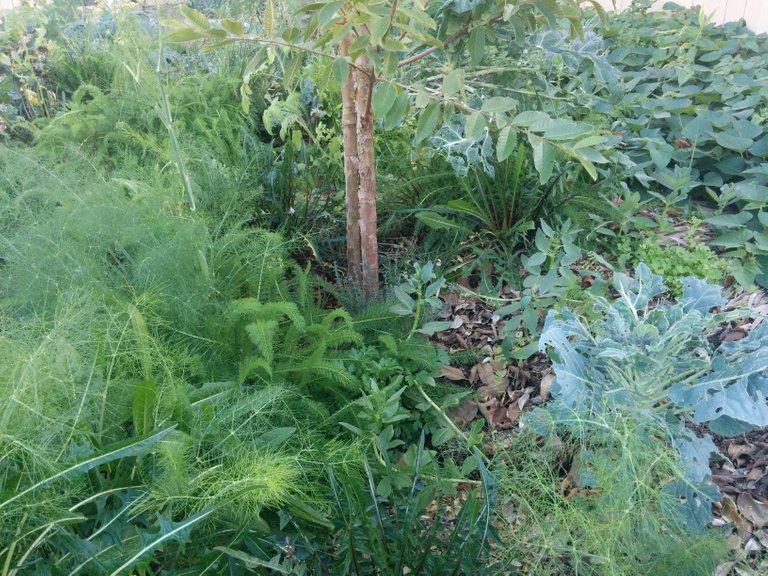

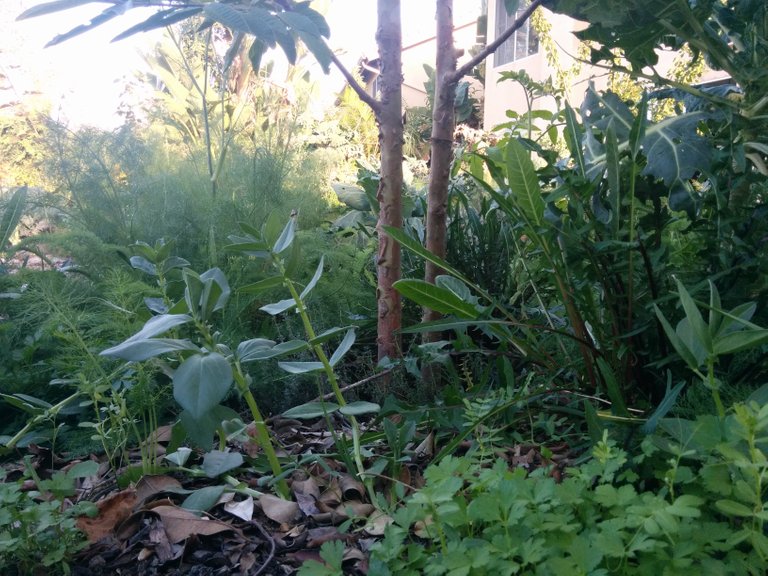

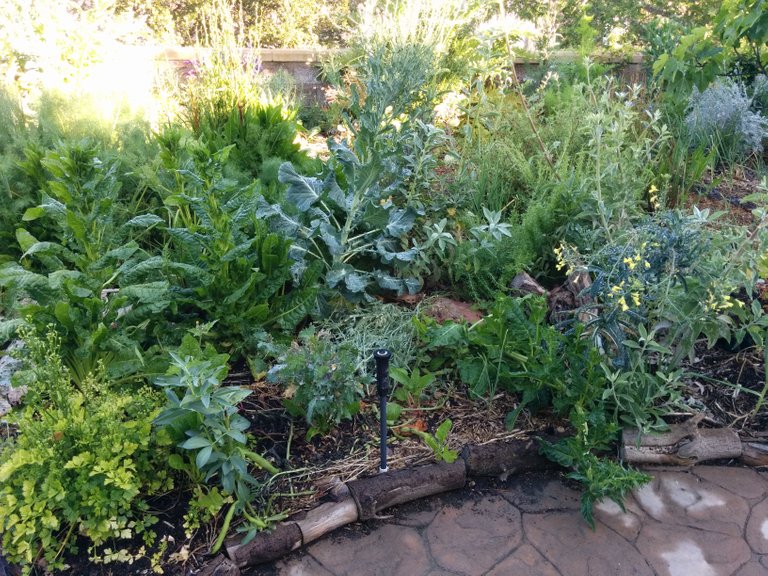


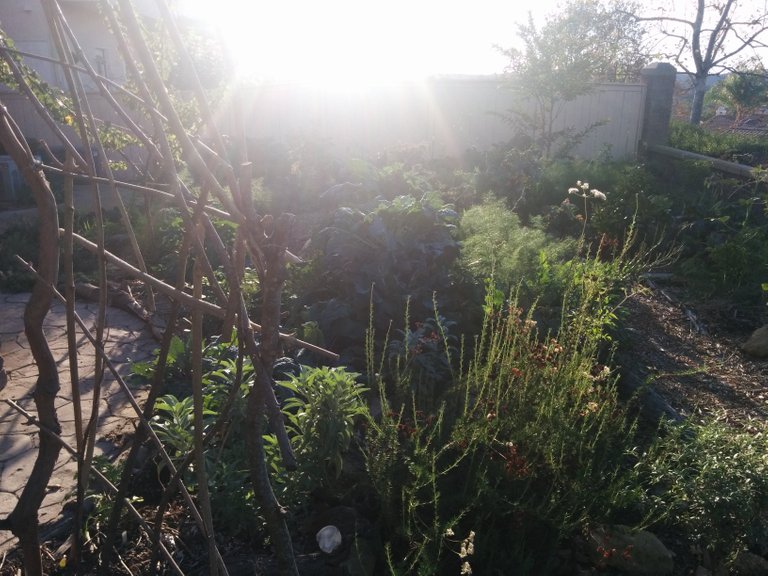
Thank you for joining me in this garden tour!
I hope you enjoyed and possibly were inspired! I will be making one more celebratory update to this series in the very near future :)
More posts in this series:
Part 1: From Grass to a Vegetable Polyculture
Part 2: How I Used Pioneer Veggies to Build Healthy Soil
Part 3: A Permaculture Consultation for A New Garden
Part 4: Celebration of Abundance! Epic Garden Harvest

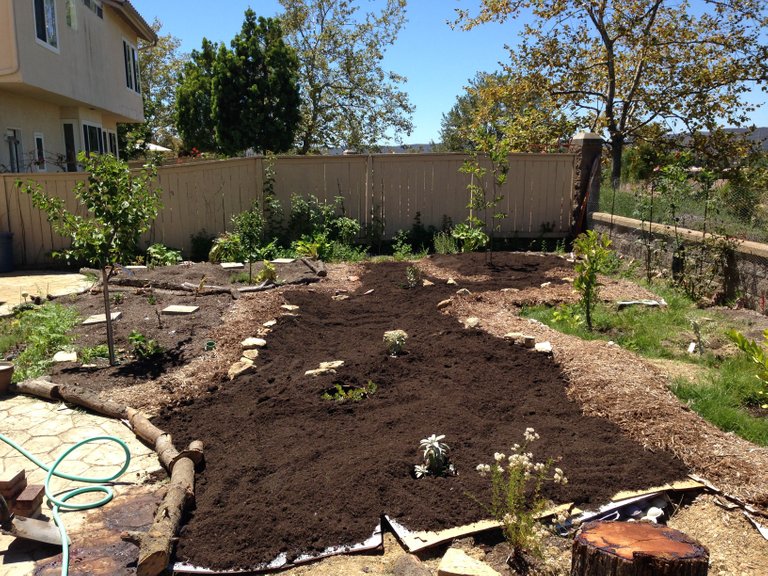
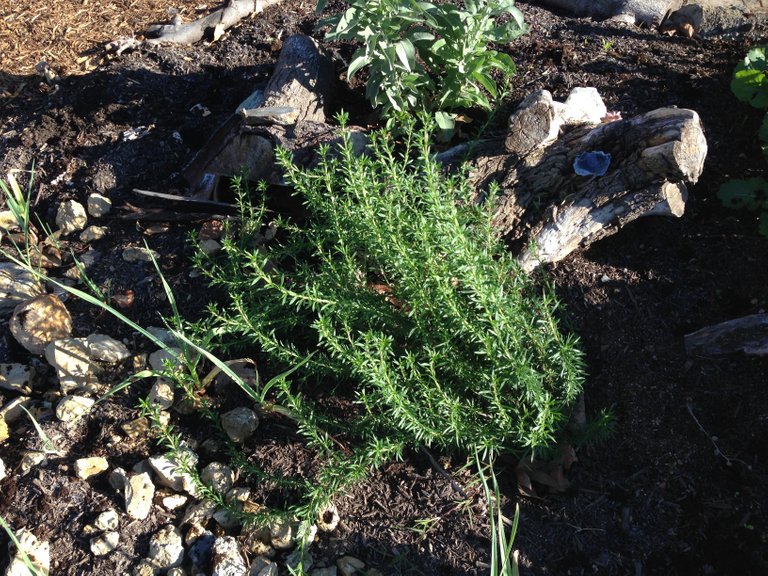

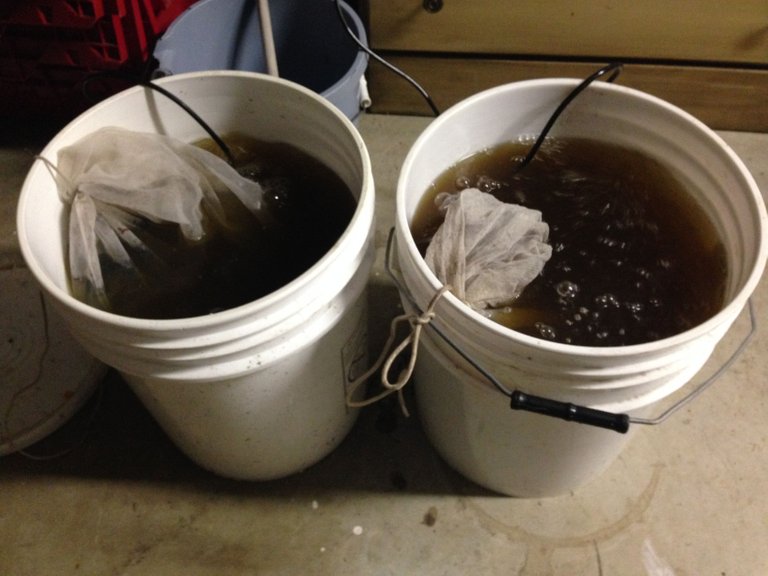
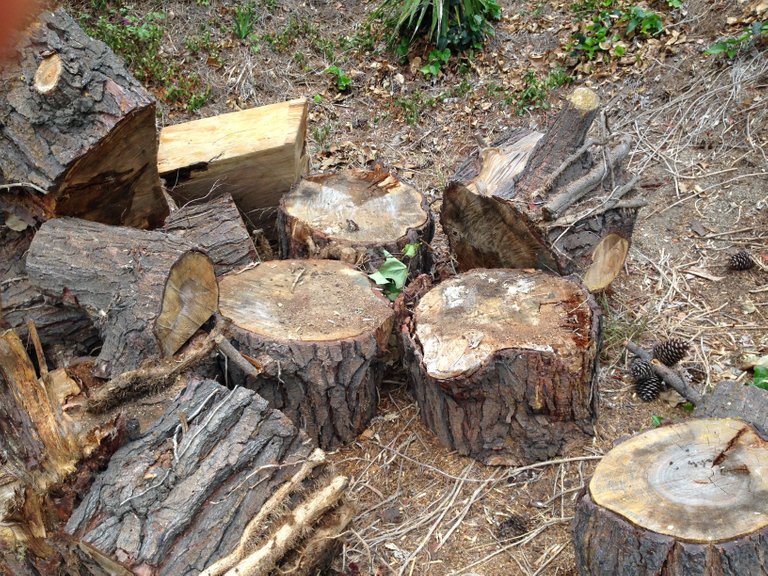
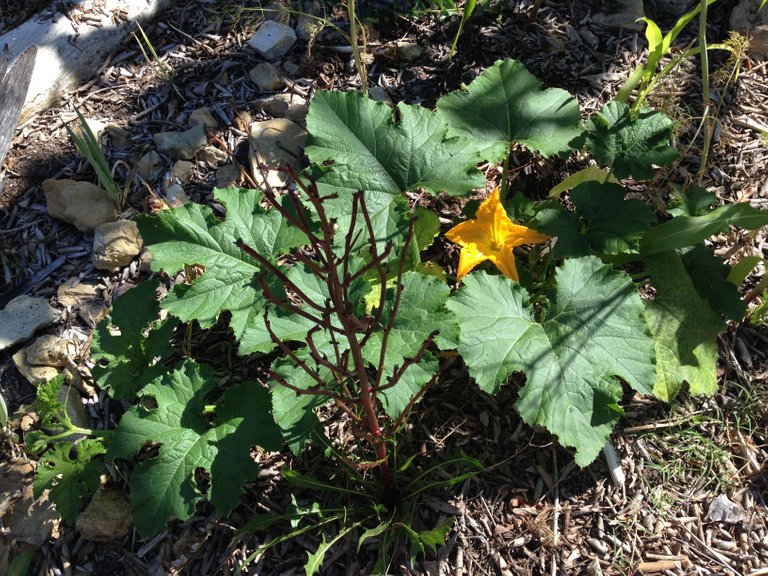
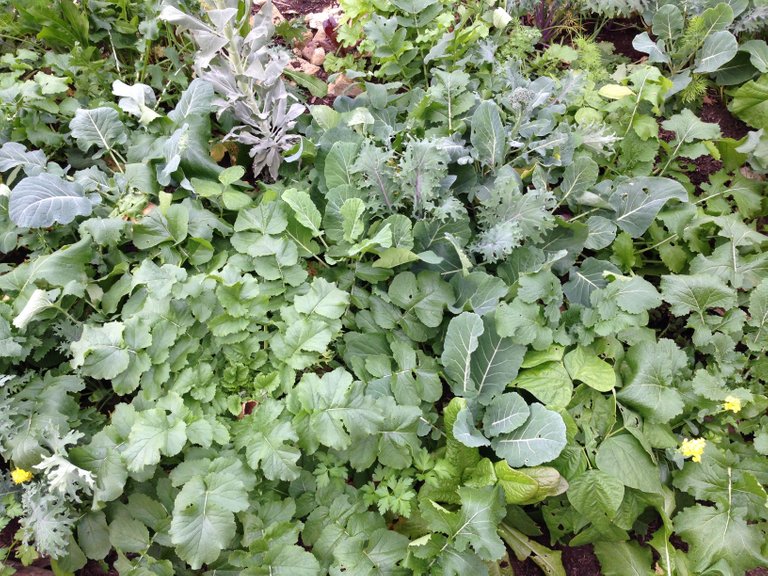
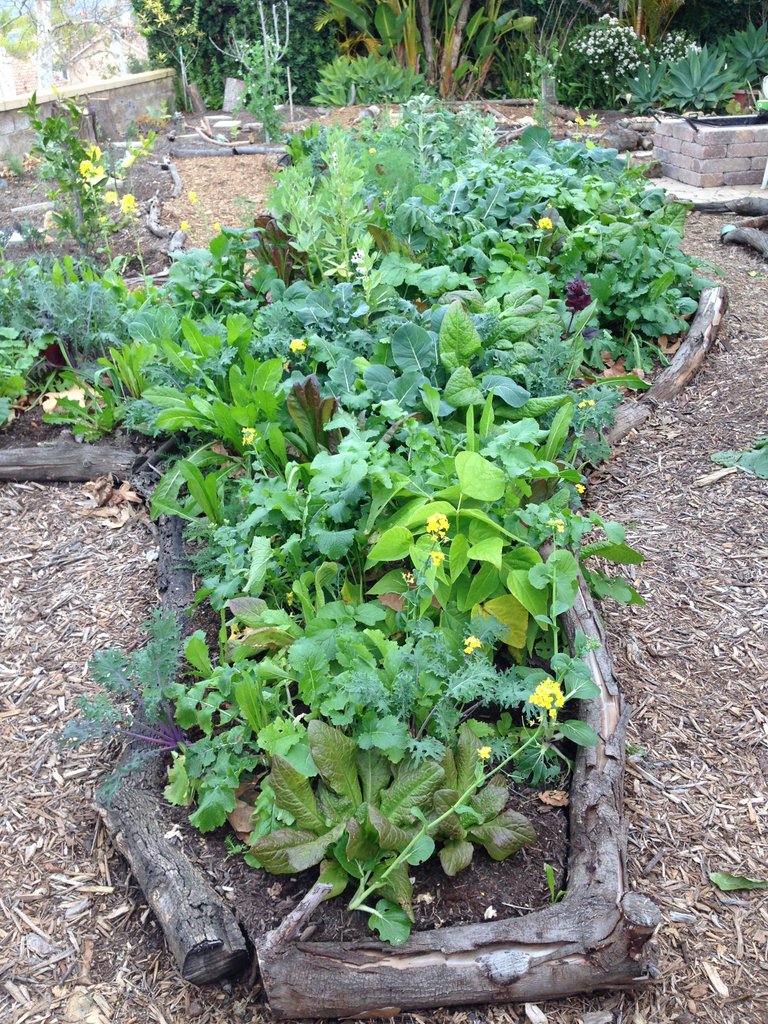
absolutely beautiful!!!!!
Brilliant again. I really love these suburban Permaculture Designs. In case it was your house, did the Permaculture garden increase the market value of the house? I know of many cases, where Permaculture design increased the value of farm land or bigger properties, yet I would be very interested in the suburban area. I guess a house retrofit would definitely increase the value, but still curious about what kind of role a gorgeous garden like yours plays.
All the best.
Moritz
Yes it totally did help increase the value. With such a "wild" looking garden in a very conservative neighborhood I was worried that the garden would be too crazy for most people. But it turns out it was the biggest selling point of the home and really helped it stand out from everyone else. I think edible landscaping is getting trendier and trendier and I really think it's the most enjoyable and potentially cheapest way to increase the value of a home ... if you like gardening.
So Epic!! This garden is amazing! I love sheet mulching over lawns such an ease compared to building raised beds. I am definitely tuning in here, you have some great design skills!!
Thank you @enolderman :) That is very kind of you! I am definitely a fan of raised beds and working with the soil as well. It's nice to have options to choose from depending on your goals and the situation at hand!
Wow Up voting such incredible work both plants And your article Very well detailed also. Keep it up
Thank you @tokoya :)
Congratulations @Sagescrub. You won our contest. Official announcement will be made soon.
Wow thank you @remotediscovery! That is very cool and I am honored :)
Loved this, fantasic piece! I have a great big area over my septic field that is lush with tall grasses and weeds, I am hoping to smother the grasses with cardboard and do the sheet composting. Need more garden space!!!
Checking out your other posts now :)
Hey @amymya! How interesting. I have been thinking about how septic fields are great place for growing trees, shrubs, etc. with all those nutrients that are available. I wonder if there is any risk in roots damaging the leach field? I really have no idea how they are constructed. I look forward to see how it goes :)
I don't think trees would be a good idea, definite possibility of damage there, but I think veggies will be okay!
Hmm, that does make sense. How exciting!
Very well written. This is a great introductory piece. I interact with a lot of people working on smaller suburban parcels who are starting from run-down grass lawns, which can be a challenge for someone just starting out (starting from poor conditions). I'm going to bookmark this as a reference to share. Keep up the great work.
Hey @arkryal thanks for sharing! That sounds like a meaningful project you are working on. I had an idea for you: a group compost project where all the households that are involved can contribute to community compost piles. I think good compost is hard to come by in the first 1-2 years of starting a garden before it's producing enough good compost.
Love the diversity! Currently planning my fruit tree guilds for the spring.
Nice! Good luck with your guild planning & planting!
Really very beautiful composition,
good marriage between the varieties and I love the borders in natural wood!
Me I put horse manure, there are plenty behind me at home, it is very useful!
I just moved onto a home with a horse, so I have access to horse manure now! Any tips? Do you get problems with weed seeds going through?
I have, yes.
I remove them as soon as they appear, by hand or with a squeegee, in an ecological way.
OK that doesn't sound as bad as some of the literature I have read makes it sound. I don't mind weeding so I will give it a try :) I actually have never heard of the squeegee approach though. I must admit you have me perplexed and intrigued there.
Your garden looks great!! Thank you for sharing and a lot of really good information! I´ll follow to see more :)
For compost - have you looked into bokashi? We put the foodscraps from our kitchen into a bucket an sprinkle bokashi bran over, and we keep layering like that until its full and then we let it sit for 14 days and then its ready to be dug into the garden. Within a couple of weeks it will be soil.
Thank you @elfmyselfandi :) Yes I have heard of the bokashi compost method several years ago and I read up on it and shelved it because it seemed like it would take some time to perfect the art. You make it sound very simple though! Do you have to use any innoculant or is it just some grain that you layer with?
We just bought a bag of bokashi bran, I have a recipe for it but it suggested to buy a batch to begin with to see what it should look like , what texture it should have etc. We bought from a canadian company who makes it but it seems like there are a couple of different suppliers now.
The recipe I have uses wheat bran, water, EM-1 and molasses (and time, takes 4-6 weeks to get ready).
The EM-1 contains the microbs that makes the magic happen :) (as i understood it alteast)
OK! I do remember reading something about bokashi being invented by the same japanese fellow who developed or captured EM.... or something along those lines, it's been a while. Well I have been meaning to try EM out at some point, maybe now is the time and Bokashi as well! Thanks for inspiring me, I am excited to try it :)
Do you know if it has to be bran.. can you use other grains or material that is localy sourced or better yet.. wildcrafted? What are the parameters there?
Yeah we just got started with it so Im quite new myself but the fact that you can put any foodscraps in the bin ( can compost all vegetable and fruit materials including citrus, as well as raw or cooked food, and even dairy, fish, meat, and bones) is great. We dont have any animals yet that could have eaten our kitchen scraps so this way we get use of it. Oh Im happy that I could contribute with a little something, I loved reading your article!
It seems like some are trying to start their own EM with varying results, so it seems like buying it is the safest bet to get it right.
With the bran it seems you can sustitute it (rice bran was originally used but in the west it seems like wheat bran is most common, could be its easy to get). The information i found was that "Any carbon-rich plant material can substitute for bran, even sawdust."
The recipe I had was in swedish but I found what seems like a good website in english (even has a video hehe) https://www.the-compost-gardener.com/bokashi.html
OK! That makes a lot of sense! We have access to some sawdust. Also there is a lot of fallen leaves around, so I think those could be good carbon sources. It reminds me of compost toilets using sawdust, shavings or leaf litter as carbon layers. Now I am liking this idea even more!
Thanks for all the info and insights :) You've inspired me to try it out. First step..get some EM!
Np, im happy i could be of some help :) enjoy :) :)
WOW! Your thumbs are greener than a St. Patrick's day parade! Your work is amazing, I'm definitely following to learn more. Thank you for taking the time to create this amazing post.
LOL you have a way with words @lefthandlead :) Thanks for the nice compliments and making me laugh!
Your garden is BEAUTIFUL! I can't wait to have land to permaculture too!
Good luck finding your way to that garden!
Great tour! All your points are very educational. I love how different tips can vary by regions and olant, it makes gardening like solving a jigg saw puzzle where the right fit ends in happy bellies. You mention growing vining plants along light coloured walls to reduce the heat, where the greenhouse I used to work with always recommended that same place for heat loving tomatoes.
When I first started gardening with Matt I was appalled at how he would pull or chop down weeds and just leave their greens to rot on the soil. I had been taught tidy gardening practices, which also happen to miss out on this soil enriching practice. Comfrey also makes a wonderful chop and drop plant to keep in the garden.
I also recall rummaging through local recycle bin programs with Matt for cardboard to rid grass in preparation of new or expanding garden beds.
Great tips! Aimee
How fun! There is so much to learn in gardening :) How fun that you are both adventuring together in your garden activities :)
really great place and work. :) Well done !
Wow! Your posts are so dense with pertinent information! We are doing 2 hugelkultur mounds this year in a semicircle shape, sort of a keyhole, but in the center we're thinking of doing lasagna gardening. We laid a bunch of cardboard down before the snow. Now it's all buried under 3-4 feet. I'm curious what it will all look like when everything melts!
I'm so glad my experience could help you learn from my mistakes and discoveries :) I wish steemit was around when I was getting into gardening! How exciting... you don't have much more time to wait to see your sheetmulching revealed :)
great post thank you for the info! I'm having quite some trouble too, but unlike you, I think the issue here is too much rain. Our soil is clay as well, the very dense red kind. The one thing that grows very well here is squash actually lol. But my tomatoes don't grow well, despite having lots of sun.
Interesting! I just moved to a new space that is clay soil and quite rainy at in the winter and spring. I'll definitely be planting some squash... we'll see about the tomatoes.
great =) Let me know how it goes!
@sagescrub The gardens are very neat and unique. if I had a big place, I would make a garden like that.
Great post. When you bury the wood I would recommend adding a layer of compost or another source of nitrogen. It takes a lot of nitrogen to break down wood and could deplete the soil. A little fish emulsion will help if you see a deficiency... I've been experimenting with the permaculture method myself for almost a year. I watched this back to eden gardening documentary. It has heavy religous undertones and bit of scripture quotes, but very informative, even if that isn't your particular cup of tea. Speaking of tea you should throw some worm castings in a batch of your tea... It works wonders. Your garden looks amazing!
Thanks @dirtyhippie, those are good tips! I did see back to eden some years ago. I am inspired by what he was doing :)
Keep up your hard work. It was a pretty inspiring video.
Super detailed post, thanks for sharing the knowledge. I’m applying some of the concepts in my garden but can’t say it’s permaculture though.
Soil health is so critical! We worked for years in our home garden with poor soil, so dis-heartening! Thank you for the wonderful post! I'll be following you now for future posts
Thanks @birdsinparadise :) did you get your soil turned around since then?
Its looking great! We did many of the same things at our place, for pretty well the same reasons.
How exciting! I bet you are enjoying the pay off from all that hard work :)